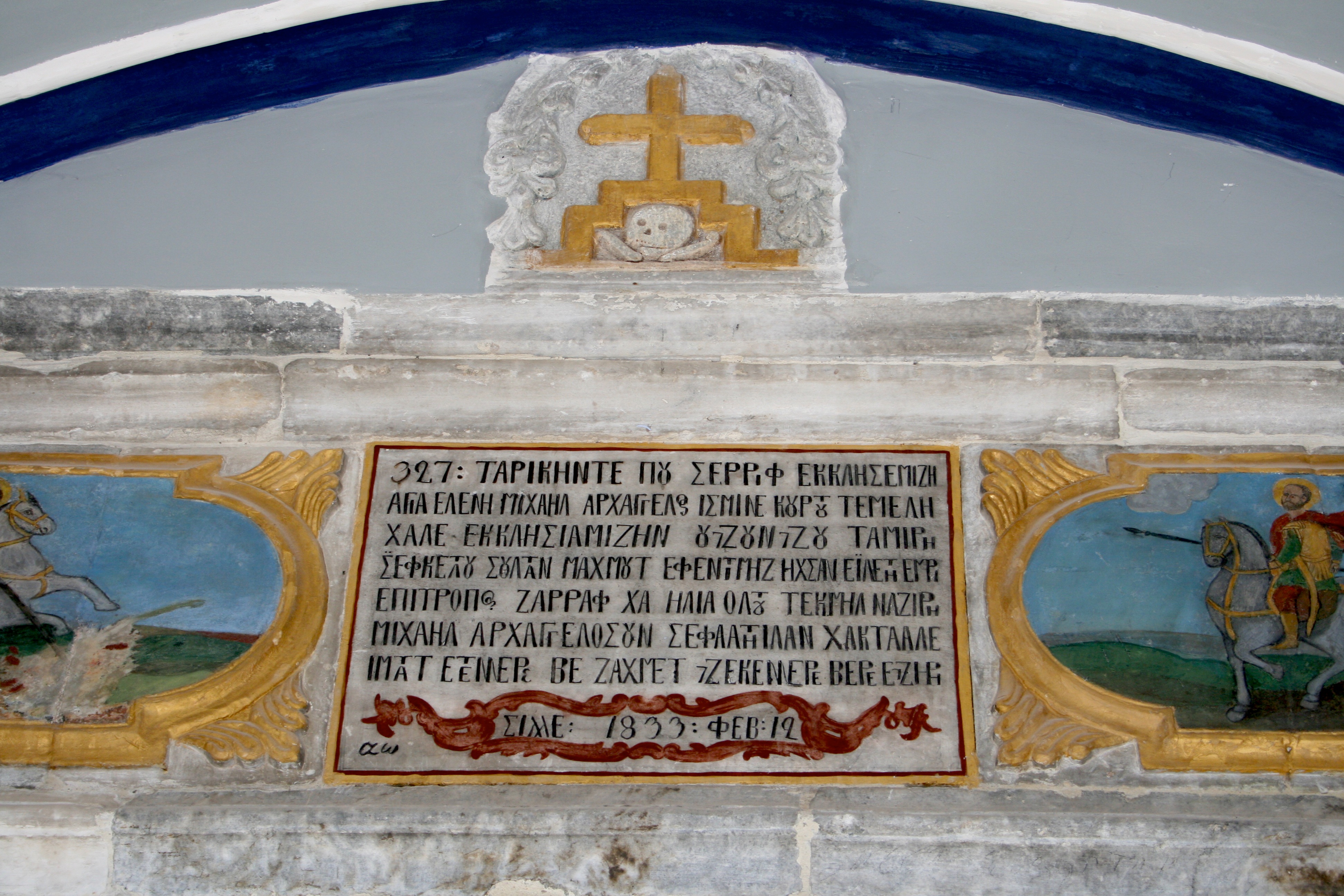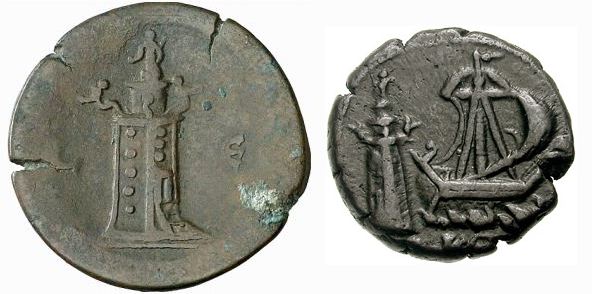|
Demetrius Nicolaides
Demetrius Nicolaides ( el, Δημήτριος Νικολαΐδης ''Dimitrios Nikolaidis''; french: Démétrius Nicolaïdes;c. 1843Strauss, "A Constitution for a Multilingual Empire," p. 29 (PDF p. 31) - 3 July 1915Balta and Kavak, p56), also known as Nikolaidis Efendi,Balta and Kavak, p41 was an Ottoman Greek journalist and compiler of legislation. Johann Strauss, author of "A Constitution for a Multilingual Empire: Translations of the '' Kanun-ı Esasi'' and Other Official Texts into Minority Languages," wrote that Nicolaides was "an extremely active but somewhat enigmatic figure in the press life of 19th century Istanbul." Nicolaides was born and raised in Ottoman Constantinople (now Istanbul) and attended the Great School of the Nation (Megalē tou Genous scholē), he graduated in 1861. His family was the Ieromnimon.Balta and Kavak, p33 Career He began editing the ''Anatolikos Astēr'' in 1862. In 1864 he left the first publication and began editing '' Heptalophos''; he recei ... [...More Info...] [...Related Items...] OR: [Wikipedia] [Google] [Baidu] |
Mecelle
The Mecelle was the civil code of the Ottoman Empire in the late 19th and early 20th century. It was the first attempt to codify a part of the Sharia-based law of an Islamic state. Name The Ottoman Turkish name of the code is ''Mecelle-ʾi Aḥkām-ı ʿAdlīye'', which derives from the Arabic ''مجلة الأحكام العدلية'', ''Majallah el-Ahkam-i-Adliya''. In European languages, it has also been transliterated as ''Mejelle'', ''Majalla'', ''Medjelle'', or ''Meğelle''. In French, it is known as ''Medjéllé'' or as the ''Code Civil Ottoman''. History Enactment The code was prepared by a commission headed by Ahmed Cevdet Pasha, including a large team of scholars, issued in sixteen volumes (containing 1,851 articles) from 1869 to 1876 and entered into force in the year 1877. In its structure and approach it was clearly influenced by the earlier European codifications. Family law, which had been originally exempted and left in the domain of religious courts, eventual ... [...More Info...] [...Related Items...] OR: [Wikipedia] [Google] [Baidu] |
Abdulhamid II
Abdülhamid or Abdul Hamid II ( ota, عبد الحميد ثانی, Abd ül-Hamid-i Sani; tr, II. Abdülhamid; 21 September 1842 10 February 1918) was the sultan of the Ottoman Empire from 31 August 1876 to 27 April 1909, and the last sultan to exert effective control over the fracturing state. The time period which he reigned in the Ottoman Empire is known as the Hamidian Era. He oversaw a period of decline, with rebellions (particularly in the Balkans), and he presided over an unsuccessful war with the Russian Empire (1877–1878) followed by a successful war against the Kingdom of Greece in 1897, though Ottoman gains were tempered by subsequent Western European intervention. In accordance with an agreement made with the Republican Young Ottomans, he promulgated the Ottoman Empire's first Constitution, which was a sign of progressive thinking that marked his early rule. However, in 1878, citing disagreements with the Ottoman Parliament, he suspended both the short-lived con ... [...More Info...] [...Related Items...] OR: [Wikipedia] [Google] [Baidu] |
Sultan Of The Ottoman Empire
The sultans of the Ottoman Empire ( tr, Osmanlı padişahları), who were all members of the Ottoman dynasty (House of Osman), ruled over the transcontinental empire from its perceived inception in 1299 to its dissolution in 1922. At its height, the Ottoman Empire spanned an area from Hungary in the north to rebel in the south and from Algeria in the west to Iraq in the east. Administered at first from the city of Söğüt since before 1280 and then from the city of Bursa since 1323 or 1324, the empire's capital was moved to Adrianople (now known as Edirne in English) in 1363 following its conquest by Murad I and then to Constantinople (present-day Istanbul) in 1453 following its conquest by Mehmed II. The Ottoman Empire's early years have been the subject of varying narratives, due to the difficulty of discerning fact from legend. The empire came into existence at the end of the 13th century, and its first ruler (and the namesake of the Empire) was Osman I. According to ... [...More Info...] [...Related Items...] OR: [Wikipedia] [Google] [Baidu] |
Galata
Galata is the former name of the Karaköy neighbourhood in Istanbul, which is located at the northern shore of the Golden Horn. The district is connected to the historic Fatih district by several bridges that cross the Golden Horn, most notably the Galata Bridge. The medieval citadel of Galata was a colony of the Republic of Genoa between 1273 and 1453. The famous Galata Tower was built by the Genoese in 1348 at the northernmost and highest point of the citadel. Galata is now a quarter within the district of Beyoğlu in Istanbul. Etymology There are several theories concerning the origin of the name ''Galata''. The Greeks believe that the name comes either from ''Galatai'' (meaning "Gauls"), as the Celtic tribe of Gauls (Galatians) were thought to have camped here during the Hellenistic period before settling into Galatia in central Anatolia; or from ''galatas'' (meaning "milkman"), as the area was used by shepherds for grazing in the Early Medieval (Byzantine) period. Acc ... [...More Info...] [...Related Items...] OR: [Wikipedia] [Google] [Baidu] |
Servet (newspaper)
''Servet'' was a newspaper published in the Ottoman Empire. It was initially published by Demetrius Nicolaides, an Ottoman Greek. It was initially only in Ottoman Turkish, though it later also had content in French. It was mailed to people in Constantinople (now Istanbul) and people in Anatolia, with twice weekly distribution to the latter.Balta and Kavak, p43 '' Servet-i Fünûn'' was originally a supplement of ''Servet''.info page on bookat Martin Luther University) // Cited: p. 29 (PDF p. 31). History Initially he wished to publish a newspaper, ''Asya'', in Karamanli Turkish, or Turkish in the Greek alphabet. He applied to the Ottoman Press Office for permission to publish the newspaper around November 1887,Balta and Kavak, p40 with permission granted in December of that year. He had to publish from Babıali as he could not produce the paper from Galata during the day, and Ottoman authorities did not permit the production of newspapers in Galata at night. In 1888 the Ottoman ... [...More Info...] [...Related Items...] OR: [Wikipedia] [Google] [Baidu] |
Ottoman Turkish Language
Ottoman Turkish ( ota, لِسانِ عُثمانى, Lisân-ı Osmânî, ; tr, Osmanlı Türkçesi) was the standardized register of the Turkish language used by the citizens of the Ottoman Empire (14th to 20th centuries CE). It borrowed extensively, in all aspects, from Arabic and Persian, and its speakers used the Ottoman Turkish alphabet for written communication. During the peak of Ottoman power (), words of foreign origin in Turkish literature in the Ottoman Empire heavily outnumbered native Turkish words, with Arabic and Persian vocabulary accounting for up to 88% of the Ottoman vocabulary in some texts.''Persian Historiography & Geography''Pustaka Nasional Pte Ltd p 69 Consequently, Ottoman Turkish was largely unintelligible to the less-educated lower-class and to rural Turks, who continued to use ("raw/vulgar Turkish"; compare Vulgar Latin and Demotic Greek), which used far fewer foreign loanwords and is the basis of the modern standard. The Tanzimât era (1839–187 ... [...More Info...] [...Related Items...] OR: [Wikipedia] [Google] [Baidu] |
Karamanli Turkish
Karamanlı Turkish ( tr, Karamanlı Türkçesi, el, Καραμανλήδικα, Karamanlídika) is a dialect of the Turkish language spoken by the Karamanlides. Although the official Ottoman Turkish was written in the Arabic script, the Karamanlides used the Greek alphabet to write their form of Turkish. Karamanlı Turkish had its own literary tradition and produced numerous published works in print during the 19th century, some of them published by the British and Foreign Bible Society as well as by Evangelinos Misailidis in the Anatoli or Misailidis publishing house. Karamanlı writers and speakers were expelled from Turkey as part of the Greek-Turkish population exchange in 1923. Some speakers preserved their language in the diaspora. The written form stopped being used immediately after Turkey adopted the Latin alphabet. A fragment of a manuscript written in Karamanlı was also found in the Cairo Geniza. Sample Text The following sample text displays the text written in ... [...More Info...] [...Related Items...] OR: [Wikipedia] [Google] [Baidu] |
Theodoros Kasapis
Theodoros Kasapis ( gr, Θεόδωρος Κασάπης, tr, Teodor Kasap) (1835–1897)İz, FahīrTeodor Ḳaṣāb in: Encyclopaedia of Islam, Second Edition, Edited by: P. Bearman, Th. Bianquis, C.E. Bosworth, E. van Donzel, W.P. Heinrichs. was an Ottoman Greek newspaper editor and educator. Biography He was born on November 10, 1835, in Kayseri, in central Anatolia. He studied in Paris and worked for about seven years as a personal secretary to the French novelist Alexandre Dumas. He taught French in various schools in Istanbul and then in the Imperial School of Artillery. He also worked as an editor of the French newspaper ''Étoile d'Orient''. In February 1870, he issued in French, the weekly satirical newspaper '' Le Diogene'', then in Greek as Ο Διογένης (''O Diogenis'') and subsequently in Turkish as ''Diyojen''. Another publication which Kasapis issued was the newspaper '' Çingirakli Tatar'' in Turkish and in Greek. Then he proceeded with the issuance of th ... [...More Info...] [...Related Items...] OR: [Wikipedia] [Google] [Baidu] |
Pharos Of The Bosphorus
The Lighthouse of Alexandria, sometimes called the Pharos of Alexandria (; Ancient Greek: ὁ Φάρος τῆς Ἀλεξανδρείας, contemporary Koine ), was a lighthouse built by the Ptolemaic Kingdom of Ancient Egypt, during the reign of Ptolemy II Philadelphus (280–247 BC). It has been estimated to have been at least in overall height. One of the Seven Wonders of the Ancient World, for many centuries it was one of the tallest man-made structures in the world. The lighthouse was severely damaged by three earthquakes between 956 and 1323 AD and became an abandoned ruin. It was the third-longest surviving ancient wonder (after the Mausoleum at Halicarnassus and the extant Great Pyramid of Giza), surviving in part until 1480, when the last of its remnant stones were used to build the Citadel of Qaitbay on the site. In 1994, a team of French archaeologists dove into the water of Alexandria's Eastern Harbour and discovered some remains of the lighthouse on the sea f ... [...More Info...] [...Related Items...] OR: [Wikipedia] [Google] [Baidu] |





